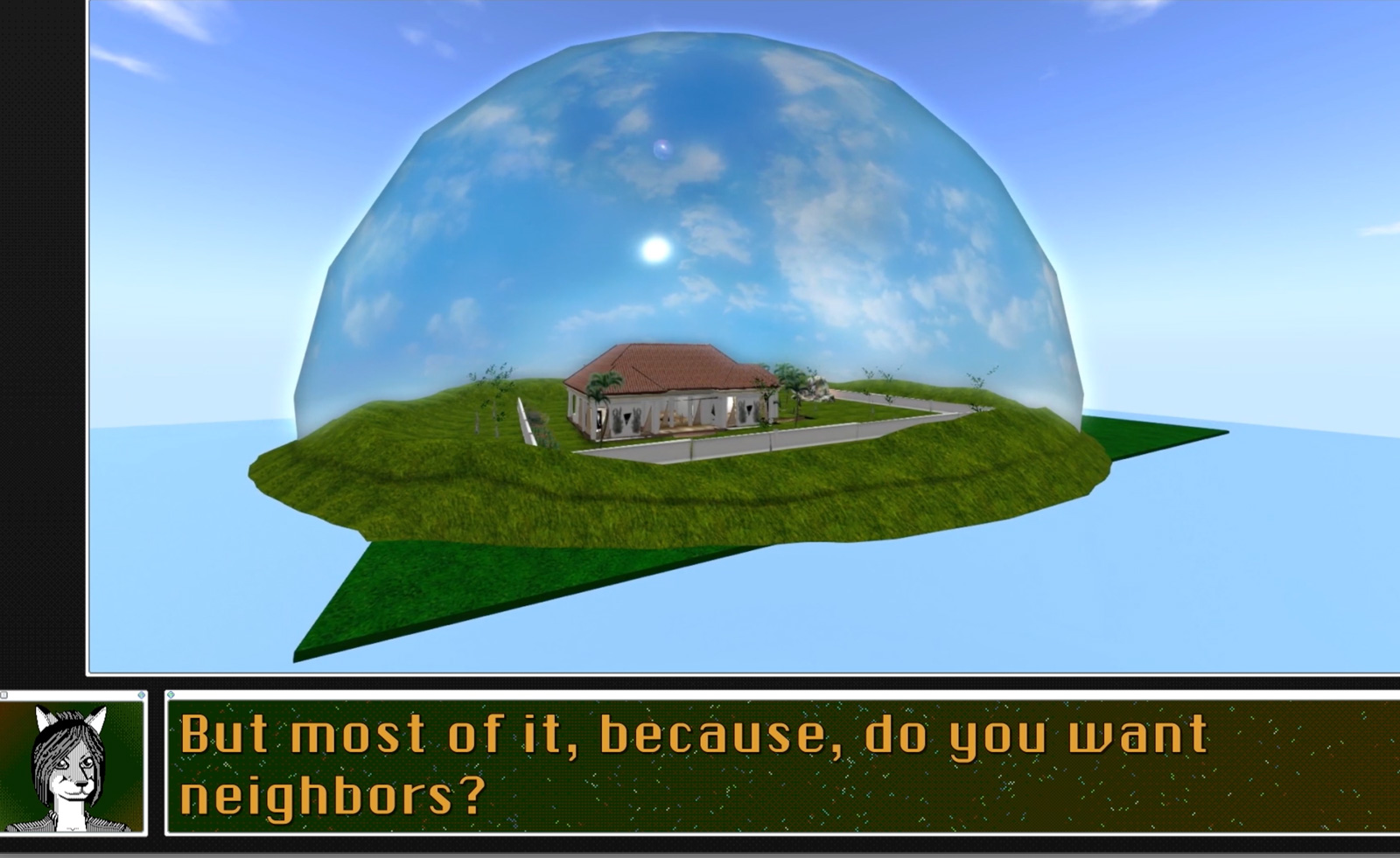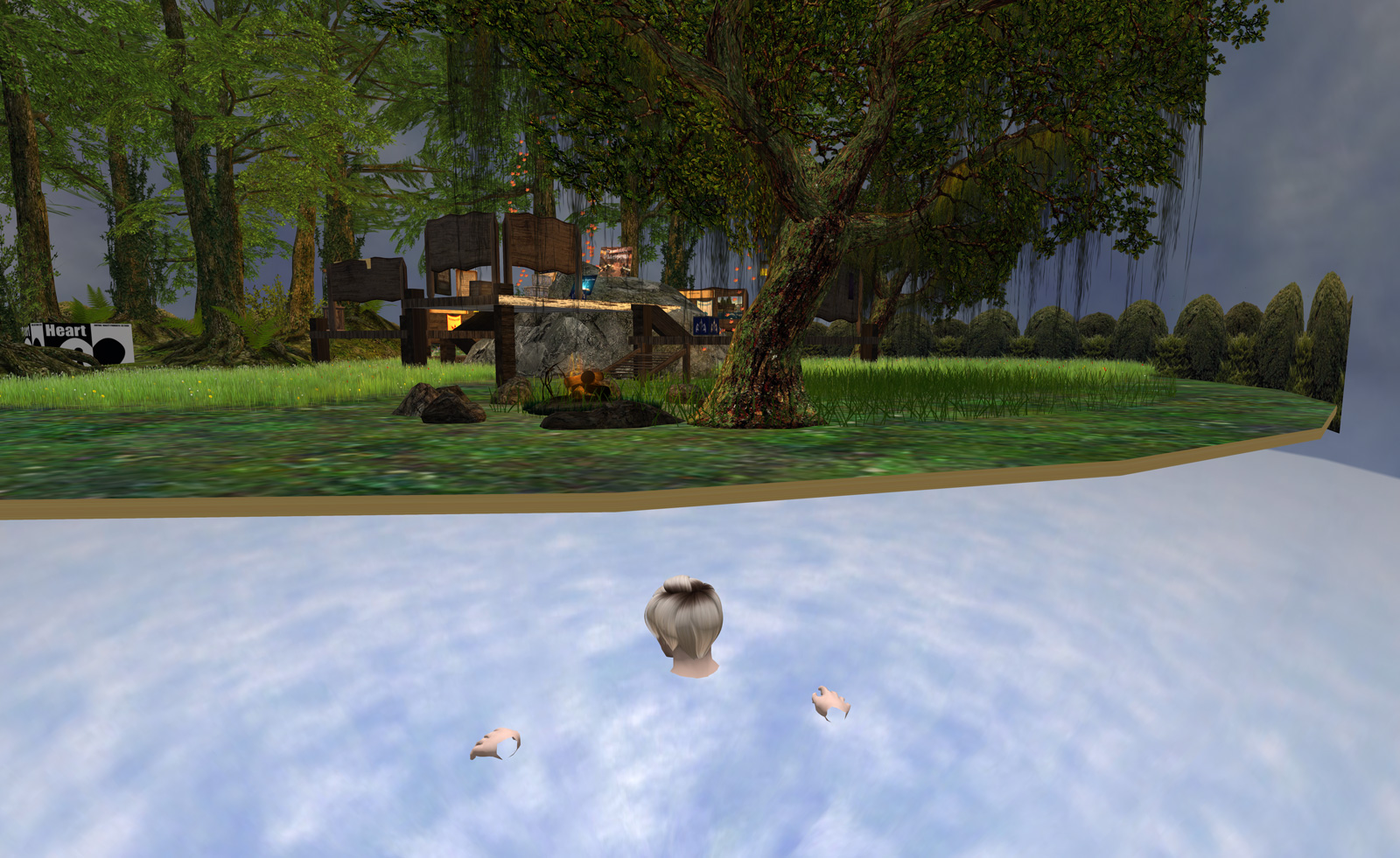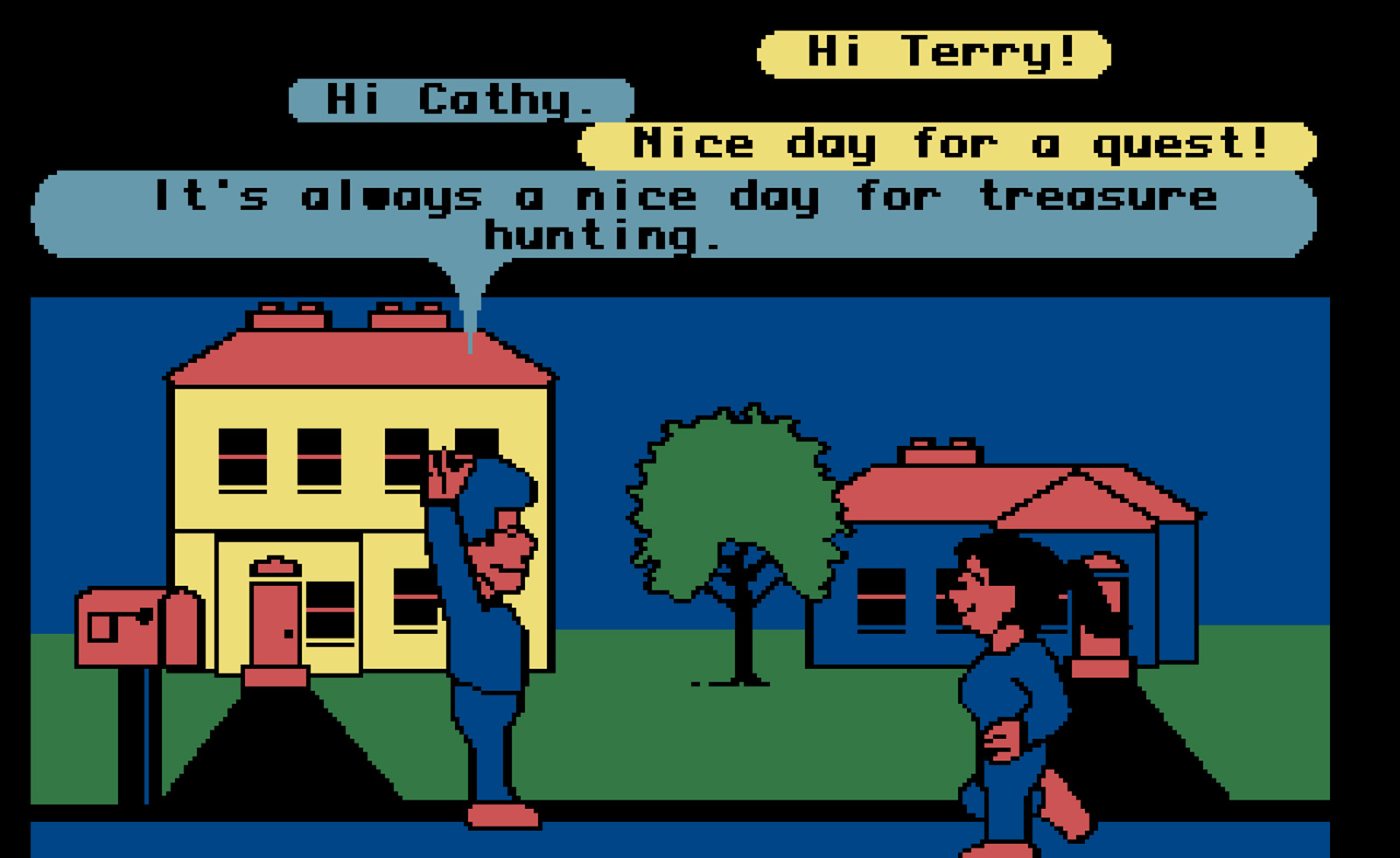
Virtual worlds, briefly digital epicentres of user communities and all-consuming lifestyles lived online, tend to burn brightly before disappearing, hosting one last ‘end of the world’ party before the servers are permanently switched off.
The journey since the earliest online games – from Maze, the first 3D first-person game to be created, to PlayStation Home, WorldsChat and Myst Online – is now traced by a new London exhibition. ‘Between Worlds’, which opened this summer to mark the 20th anniversary of Second Life, a rare example of a still-active virtual world, explores these online communities.
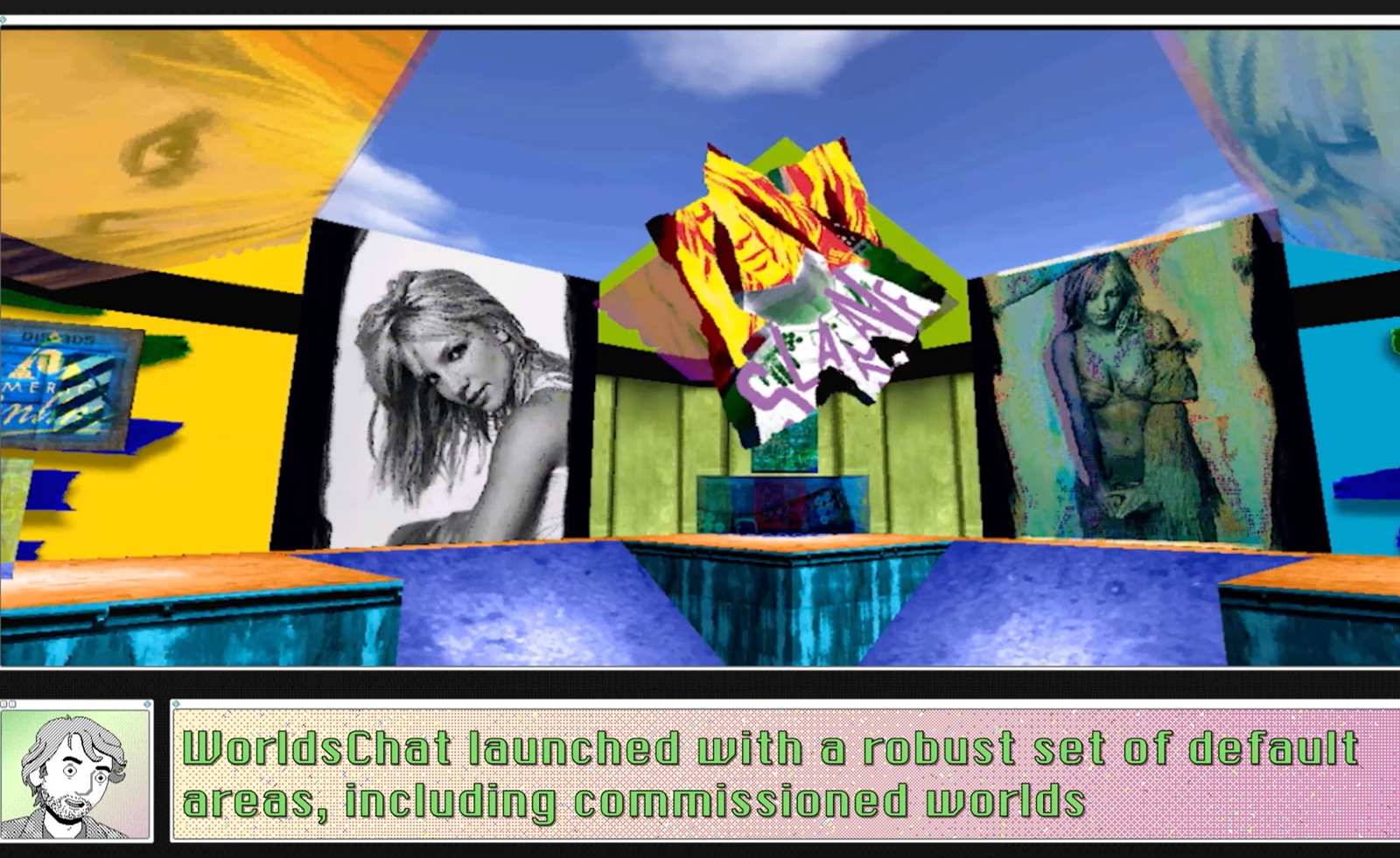
‘The exhibition traces the development of early virtual worlds (for example Habitat from 1985) and compares how the premise of alternative worlds, as spaces for virtual communities to flourish, developed into the 2000s, where it became commercialised through platforms such as Second Life, and resurfaces today through both corporate and public promises of metaverses,’ say the exhibition’s curators Sam Mercer and Arieh Frosh. ‘Rather than being nostalgic, the exhibition aims to bring attention to the attitudes and politics that structure these spaces, and the communities that inhabit them.’
The exhibition considers what happens to these now-defunct communities, looking at YouTube videos marking the endings, and web documentary Preserving Worlds, which focuses on how the communities are maintained.
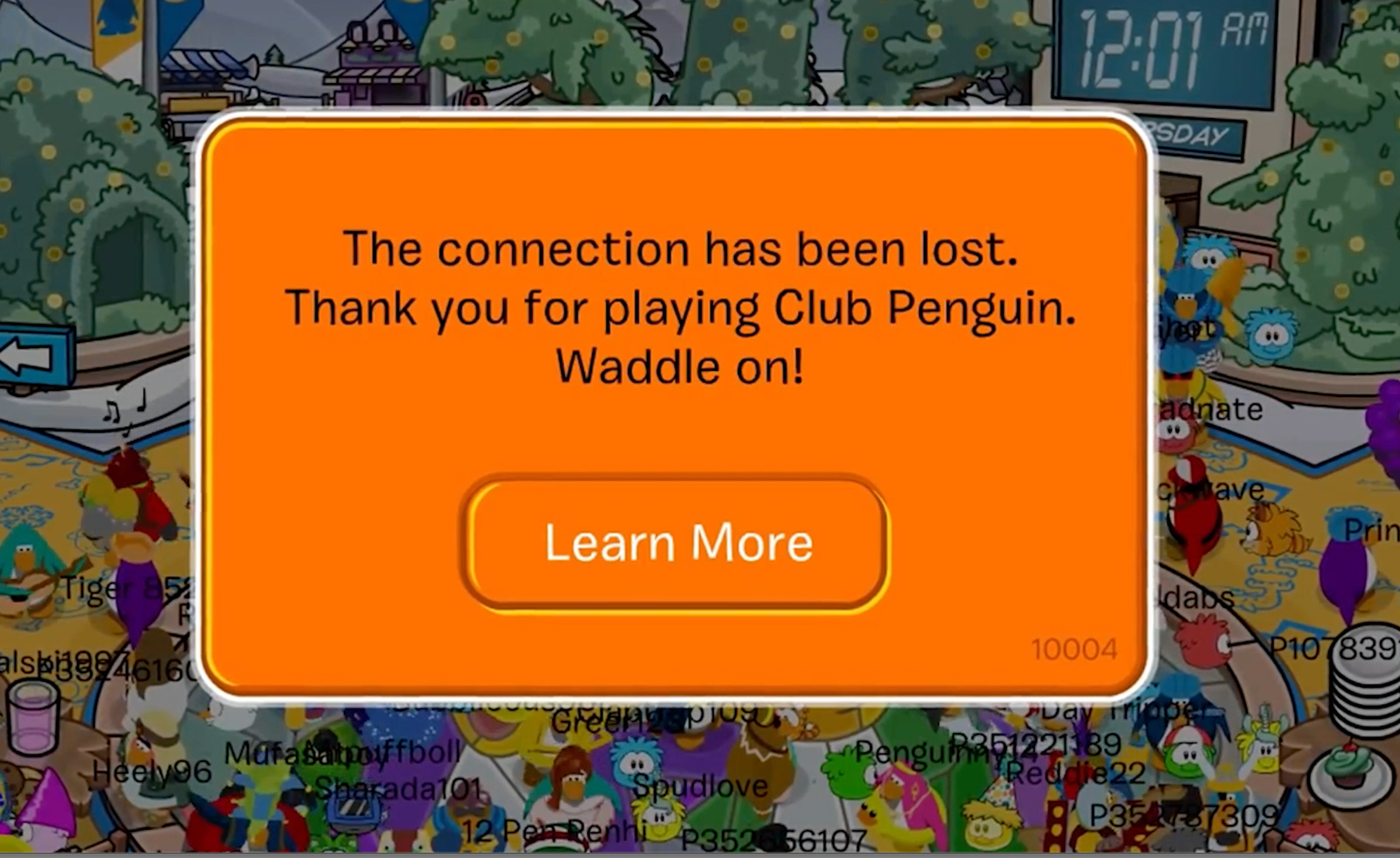
A newly commissioned video game, World Imagining Game, by Glasgow-based creative developers Benjamin Hall and Frances Lingard, is also included in the exhibition, encouraging players to create their own characters, mode of gameplay and to think about how their world will be moderated.
‘We take a critical look at virtual worlds and wanted to think more about what the general public wants from these spaces that we are told are the future, ones that will have an increasing importance in access to services, entertainment, socialising and work,’ Frosh and Mercer add.
‘Some of the questions we are asking are: who designs virtual worlds, and for whom? What are the economic and ecological realities of these spaces? To produce this we worked with Hall and Lingard. We mapped out a game in which the players design a virtual world from its initial creation and imagine its demise: what happens to the users, the content, the cultures that existed there? As you play the game and answer a series of questions, a visual representation of your virtual world emerges. Upon completing the game, your world will be added to an online repository of hundreds of other imagined worlds, with a selection printed and added to the space at the gallery.’
‘Between Worlds’ at The Photographers’ Gallery, London, is open from 23 June – 24 September 2023
thephotographersgallery.org.uk
